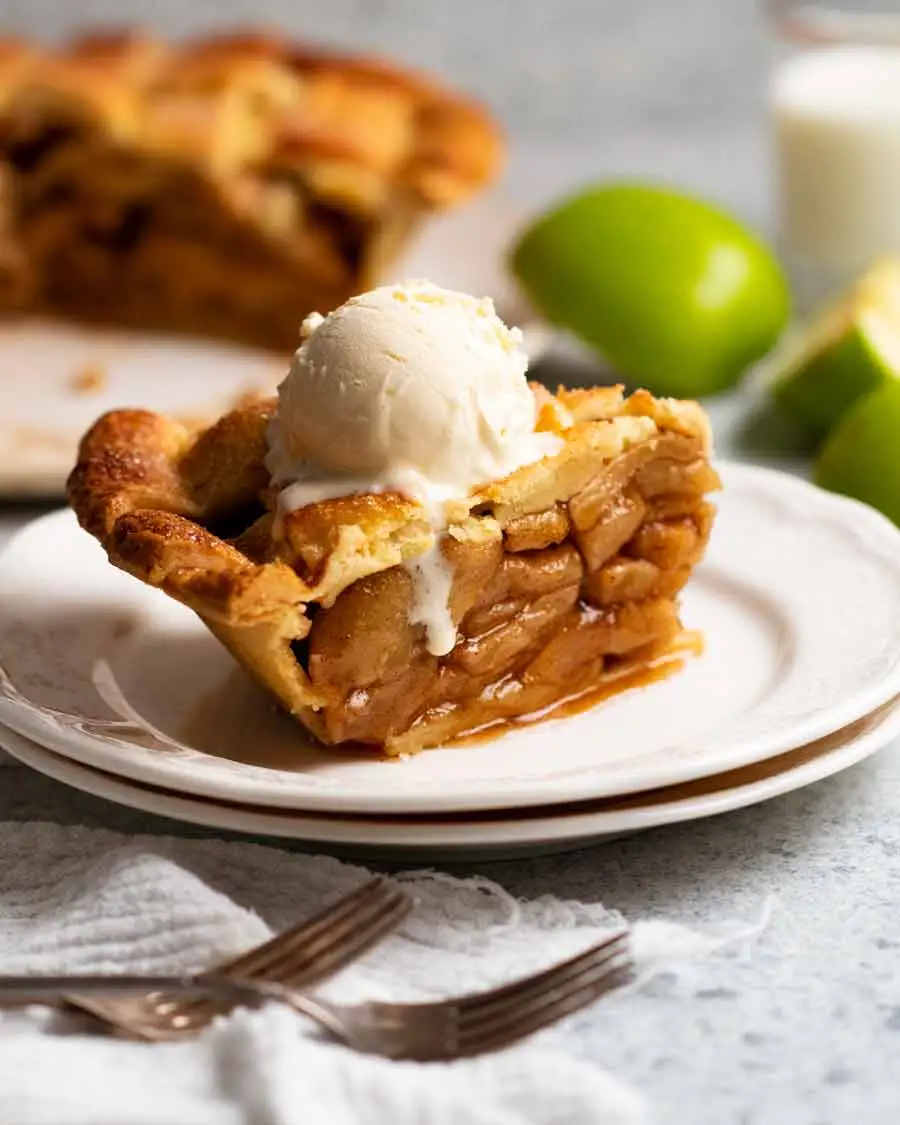
In the pantheon of classic desserts, few treats hold the same revered status as apple pie. With its flaky crust, tender apples, and warm spices, apple pie embodies the essence of comfort and nostalgia, evoking memories of crisp autumn days and cozy gatherings with loved ones. Join me as we embark on a flavorful journey to uncover the unique charm of apple pie, exploring its rich history, cultural significance, and enduring appeal.
A Heritage of Homesteads
The origins of apple pie can be traced back through centuries of culinary tradition, with variations of the dish appearing in cultures around the world. However, it was in America that apple pie truly came into its own, becoming a cherished symbol of home, hearth, and the American spirit.
The earliest known reference to apple pie dates back to 1381 in England, where it was mentioned in a cookbook titled “The Forme of Cury.” However, it wasn’t until the 17th and 18th centuries, when European settlers brought their culinary traditions to the New World, that apple pie began to take root in American culture.
In colonial America, apple pie was a common dessert, thanks in part to the abundance of apples grown in the region and the simplicity of the recipe. Families would gather wild apples from orchards and groves, then bake them into pies using basic ingredients like flour, sugar, and butter—a tradition that endures to this day.
The Art of Baking
At its core, apple pie is a testament to the timeless art of baking—a delicate balance of flavors, textures, and techniques that transform humble ingredients into a mouth-watering masterpiece. The process begins with selecting the perfect apples, with varieties like Granny Smith, Honeycrisp, and Fuji favored for their sweet-tart flavor and firm texture.
Next comes the preparation of the crust, which forms the foundation of the pie. Whether homemade or store-bought, the crust should be tender, flaky, and golden brown—a delicate balance of flour, butter, and water that cradles the filling in a buttery embrace.
As for the filling, it’s a simple yet satisfying combination of sliced apples, sugar, spices, and a splash of lemon juice. Cinnamon, nutmeg, and cloves add warmth and depth of flavor, while a sprinkle of flour or cornstarch helps thicken the juices and bind the filling together.
Once assembled, the pie is baked until the crust is golden brown and the filling is bubbling and fragrant—a tantalizing aroma that fills the kitchen and beckons eager taste buds to the table.
Cultural Significance
Beyond its culinary appeal, apple pie holds a special place in the hearts and traditions of American culture. It’s often associated with holidays like Thanksgiving and Independence Day, where it serves as a centerpiece for festive feasts and gatherings with family and friends.
In popular culture, apple pie has become a symbol of Americana—a nostalgic reminder of simpler times and the values of home, hearth, and community. It’s mentioned in countless songs, movies, and television shows, where it’s celebrated as the ultimate comfort food and a source of joy and camaraderie.
Regional Variations
While classic apple pie is beloved across the United States, there are countless regional variations and interpretations that add unique flavors and ingredients to the dish.
In the South, for example, “Southern apple pie” is a popular variation that’s known for its rich, caramelized filling and lattice crust topping. In the Midwest, “Dutch apple pie” is a favorite, featuring a crumbly streusel topping made with brown sugar, butter, and oats.
In the Pacific Northwest, “Northwest apple pie” is celebrated for its use of local ingredients like marionberries and hazelnuts, adding a deliciously sweet and nutty flavor to the classic dish.
Conclusion
In a world filled with culinary delights, apple pie stands out as a timeless classic—a sweet slice of tradition that warms the heart and delights the senses. Whether enjoyed as part of a holiday celebration or a simple Sunday supper, apple pie never fails to evoke feelings of comfort, nostalgia, and joy.
As we savor each tender bite of flaky crust and warm, spiced apples, let us not only revel in the deliciousness of apple pie but also celebrate its rich history, cultural significance, and enduring appeal. For in apple pie, we find not just a dessert, but a cherished tradition—a symbol of home, hearth, and the simple pleasures of life.










